Relativity and Black Holes
Astronomical Evidence For Black Holes
In the late 20th century, the study of black holes became a part of mainstream
astrophysics. The advent of radio astronomy and X-ray astronomy, and later
the rise of numerical computing which allowed for more complex physical
situations than would be possible analytically, lead to an interplay of theory
and observation.
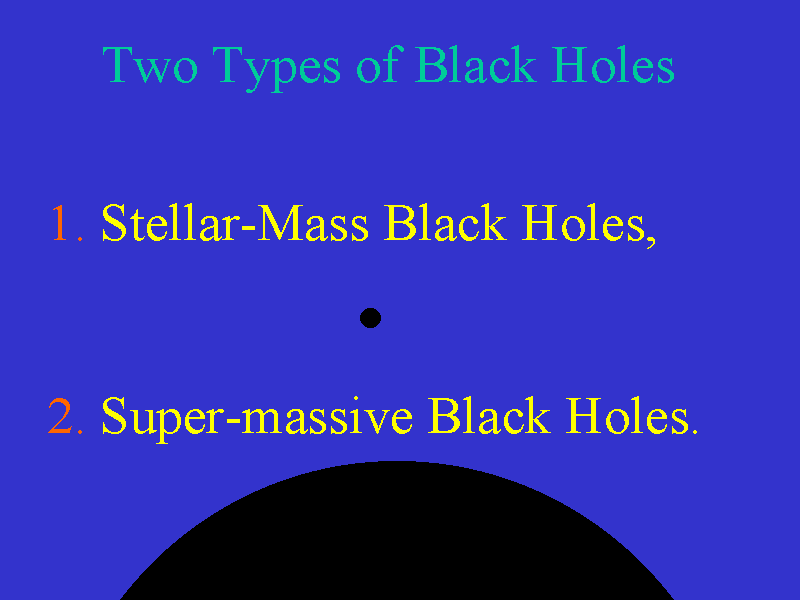 This work has lead to the discovery of two fundamentally different types of
black holes: stellar-mass black holes, and super-massive black holes.
This work has lead to the discovery of two fundamentally different types of
black holes: stellar-mass black holes, and super-massive black holes.
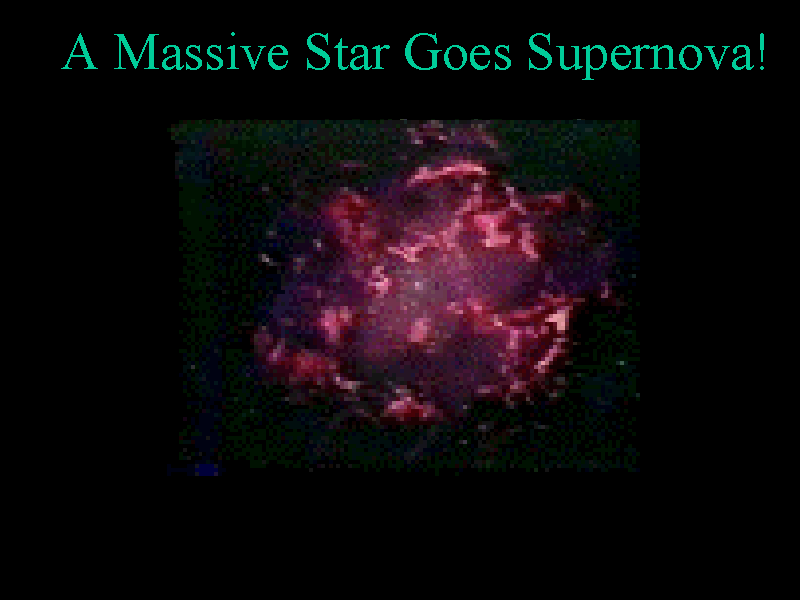 In the natural evolution of very massive stars (say 10 solar masses or
greater),
following a series of fusion events, there is a tremendous explosion
called a supernova. If the burned out core of a supernova remnant
is more massive than about 1.45 solar masses, then the core will collapse
into a neutron star.
In the natural evolution of very massive stars (say 10 solar masses or
greater),
following a series of fusion events, there is a tremendous explosion
called a supernova. If the burned out core of a supernova remnant
is more massive than about 1.45 solar masses, then the core will collapse
into a neutron star.
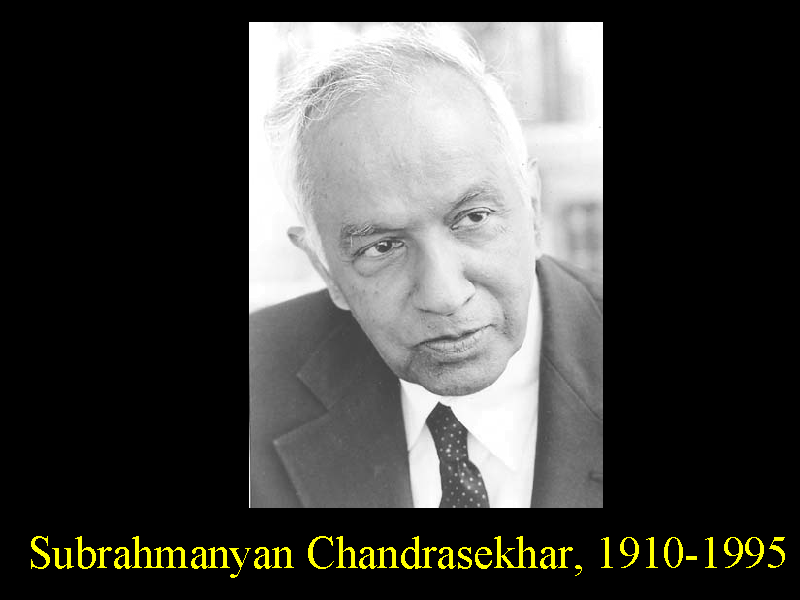 This mass limit of 1.45 solar masses is called the Chandrasekhar
limit after S. Chandrasekhar, one of the key figures
in the mathematical theory of black holes.
If a supernova remnant core is more massive than 3 solar
masses, then the core will collapse to from a black hole.
This mass limit of 1.45 solar masses is called the Chandrasekhar
limit after S. Chandrasekhar, one of the key figures
in the mathematical theory of black holes.
If a supernova remnant core is more massive than 3 solar
masses, then the core will collapse to from a black hole.
Unfortunately, by its very nature, a black hole emits no detectable radiation.
How then can a black hole be detected?
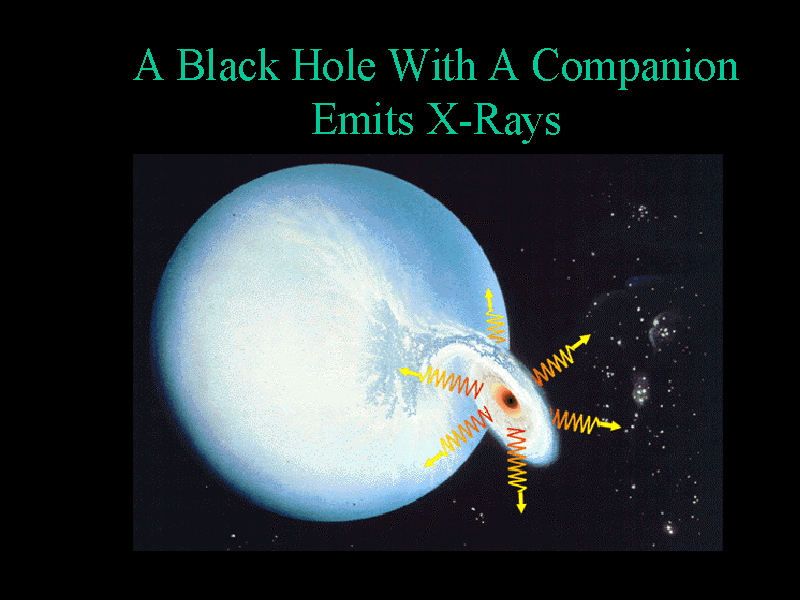 One way is to detect radiation from the matter around the black hole.
In particular, if the black hole has a companion star, then the black hole
may suck material off of the atmosphere of its companion. The resulting
material forms into a disk around the equator of the black hole, called
an accretion disk.
One way is to detect radiation from the matter around the black hole.
In particular, if the black hole has a companion star, then the black hole
may suck material off of the atmosphere of its companion. The resulting
material forms into a disk around the equator of the black hole, called
an accretion disk.
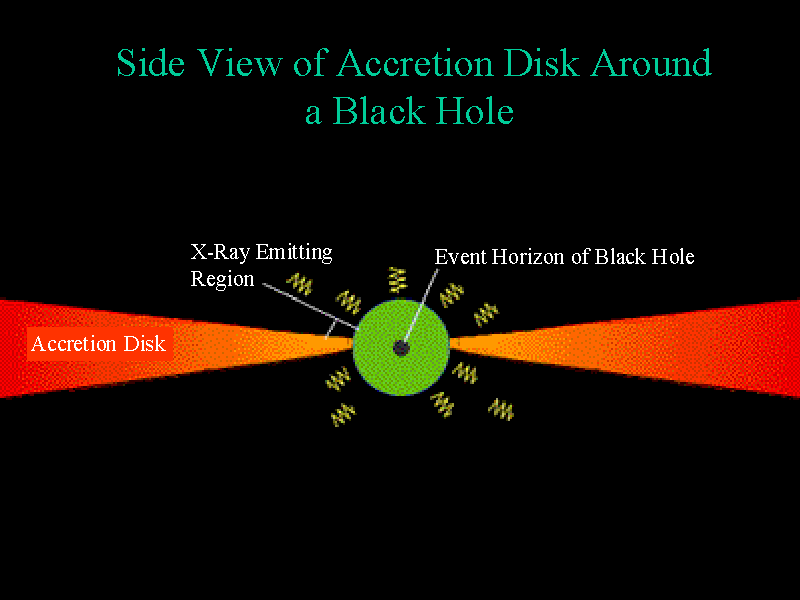 In the accretion disk, the material grinds against itself and heats up.
The result is that tremendous amounts of energy is radiated from the
accretion disk, much of it in the X-ray part of the spectrum.
This is a schematic of the accretion disk near the event horizon.
In the accretion disk, the material grinds against itself and heats up.
The result is that tremendous amounts of energy is radiated from the
accretion disk, much of it in the X-ray part of the spectrum.
This is a schematic of the accretion disk near the event horizon.
Since the Earth's atmosphere is opaque to X-ray radiation, the science of
X-ray astronomy was not born until the `60's.
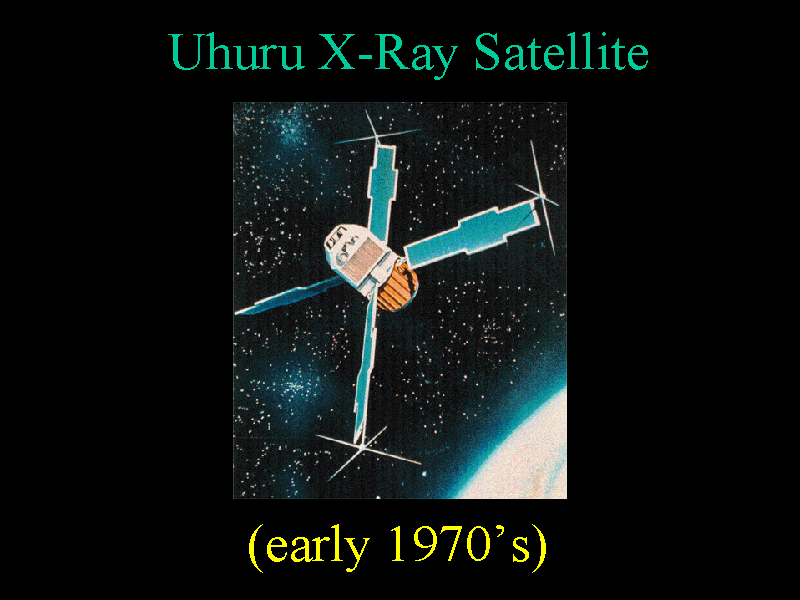 Of particular note, is NASA's Uhuru X-ray satellite which was launched in
the early 1970's. It detected evidence of both black holes and neutron stars.
Of particular note, is NASA's Uhuru X-ray satellite which was launched in
the early 1970's. It detected evidence of both black holes and neutron stars.
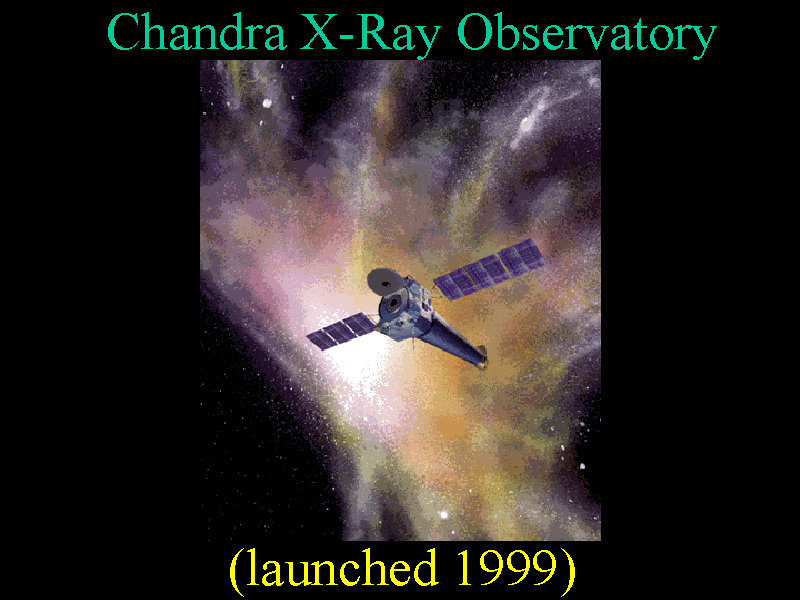 Currently, the state-of-the-art in X-ray astronomy is the Chandra X-ray
Observatory which was launched in 1999. This satellite can observe X-rays
from particles up to the last second before they fall into a black hole!
Currently, the state-of-the-art in X-ray astronomy is the Chandra X-ray
Observatory which was launched in 1999. This satellite can observe X-rays
from particles up to the last second before they fall into a black hole!
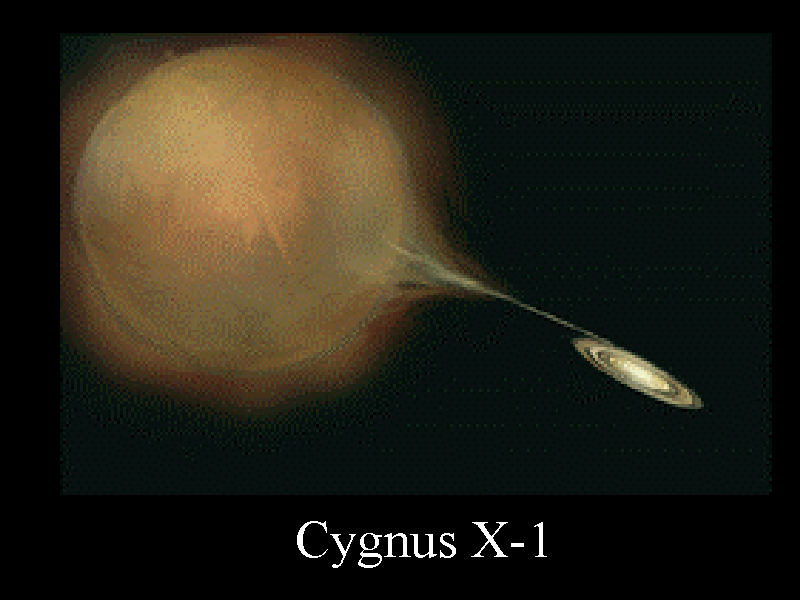 The first candidate black hole was Cygnus X-1 which we located earlier.
This picture is an artists concept of what Cygnus X-1 may look like.
By studying the orbital motion of the optical companion (a 9th magnitude
star with catalog number HD 226868), it was deduced that the unseen companion
was of mass at least 3.3 solar masses. Therefore
Cygnus X-1 is an excellent candidate for a black hole. There are other
similar candidates involving binary systems including Scorpio X-1 and V404
Cygni.
The first candidate black hole was Cygnus X-1 which we located earlier.
This picture is an artists concept of what Cygnus X-1 may look like.
By studying the orbital motion of the optical companion (a 9th magnitude
star with catalog number HD 226868), it was deduced that the unseen companion
was of mass at least 3.3 solar masses. Therefore
Cygnus X-1 is an excellent candidate for a black hole. There are other
similar candidates involving binary systems including Scorpio X-1 and V404
Cygni.
Go to next section.








